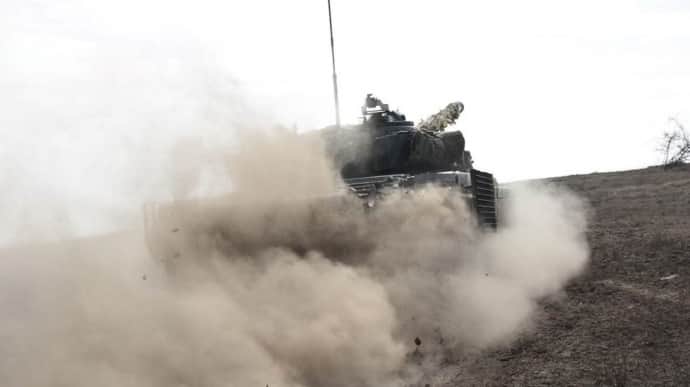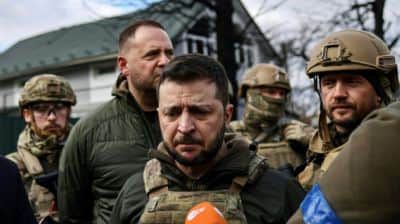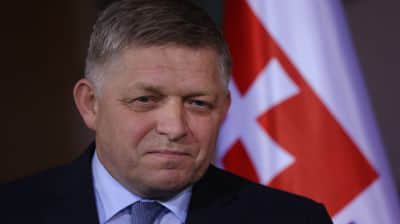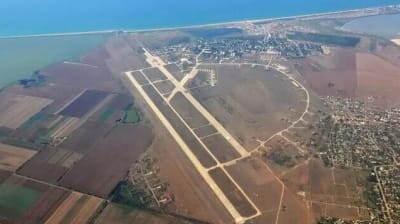Russians may step up attacks using time before US aid arrives – ISW

Experts from the Institute for the Study of War (ISW) suggest that the Russians may intensify their attacks using a window before the arrival of new US security assistance to Ukraine.
Source: ISW
Details: On 20 April, the US House of Representatives passed a supplemental appropriations bill that would provide about US$60 billion in aid to Ukraine.
The bill now needs to be approved by the Senate and signed by the president before the aid can be delivered.
These requirements, as well as the logistics of getting US aid to the frontline in Ukraine, are likely to mean that the aid will not start to have an impact on the battlefield for several weeks.
"The frontline situation will therefore likely continue to deteriorate in that time, particularly if Russian forces increase their attacks to take advantage of the limited window before the arrival of new US aid," the report says.
The analysts note that Ukrainian forces may suffer additional setbacks in the coming weeks as they await US security assistance to allow Ukraine to stabilise the front. However, the Ukrainian troops are likely to be able to halt the current Russian offensive if renewed US aid arrives quickly.
The report adds: "The threat of an operationally significant Russian advance in the coming weeks remains, although the Ukrainian command may have more latitude to take short-term risks with dwindling supplies to prevent such an advance once it knows that more materiel will be arriving soon."
Experts suggest that the Russians are likely to intensify offensive operations and missile and drone strikes in the coming weeks to take advantage of the closing window due to Ukrainian materiel constraints.
In addition, Russian troops are continuing and, in some areas, have intensified offensive operations, likely to take advantage of abnormally dry spring conditions and the ongoing shortage of Ukrainian supplies before the arrival of promised Western security assistance.
At the same time, experts point out that Russian troops have achieved only tactical successes over the past six months of a deteriorating situation in Ukraine and are unlikely to achieve a breakthrough that would make the front line collapse.
However, the Russians could still make operationally significant gains in the coming weeks, favouring areas where Ukrainian defences appear relatively fragile, such as west of Avdiivka, or areas where Russian troops are within reach of operationally significant targets, such as near Chasiv Yar.
By June 2024, Ukraine is likely to be in a much better operational position, despite delays in the arrival of US security assistance to the front, and the Russian military command is likely to consider making significant changes to the large-scale offensive it plans to launch in June, although it may still go ahead as planned.
In recent months, due to uncertainty over the resumption of US assistance to Ukraine, ISW has considered a very wide range of outcomes, from the most favourable to the most dangerous.
The ISW will likely narrow this range in the coming months as the security implications of Western assistance to Ukraine become clearer and the Kremlin decides how to respond.
To quote the ISW’s Key Takeaways on 20 April:
- The US House of Representatives passed a supplemental appropriations bill on 20 April, providing for roughly US$60 billion of assistance to Ukraine. The bill must now be passed by the Senate and signed by the president before aid can begin to flow.
- These requirements and the logistics of transporting US materiel to the frontline in Ukraine will likely mean that new US assistance will not begin to affect the situation on the front line for several weeks. The frontline situation will therefore likely continue to deteriorate in that time, particularly if Russian forces increase their attacks to take advantage of the limited window before the arrival of new US aid.
- Ukrainian forces may suffer additional setbacks in the coming weeks while waiting for US security assistance that will allow Ukraine to stabilise the front, but they will likely be able to blunt the current Russian offensive, assuming the resumed US assistance arrives promptly.
- Russian forces will likely intensify ongoing offensive operations and missile and drone strikes in the coming weeks in order to exploit the closing window of Ukrainian materiel constraints.
- Ukraine will likely be in a significantly improved operational position by June 2024 regardless of delays in the arrival of US security assistance to the frontline, and the Russian military command will likely consider significant changes to the large-scale offensive operation that it is expected to launch in June, although it may still proceed as planned.
- The likely resumption of US security assistance to Ukraine is a critical turning point in the war in Ukraine, but the Kremlin, the West, and Ukraine still have additional decisions to make that will determine the character and outcome of the fighting.
- Ukrainian forces reportedly conducted successful drone strikes against several energy infrastructure facilities and a fuel storage facility within Russia on the night of 19 to 20 April.
- The Kremlin appears to be censoring demands for an investigation into the reported murder of a former Donetsk People Republic (DNR) serviceman amid a wider trend of the Kremlin coopting or otherwise censoring DNR-affiliated voices within the Russian information space.
- Russian forces recently made confirmed advances near Chasiv Yar (west of Bakhmut) and northwest of Avdiivka, and Ukrainian forces recently made confirmed advances south of Kreminna.
- Ukrainian and Russian sources reported that Russian forces are using US-made 203mm artillery ammunition that Russia may have received from Iran.
Support UP or become our patron!





